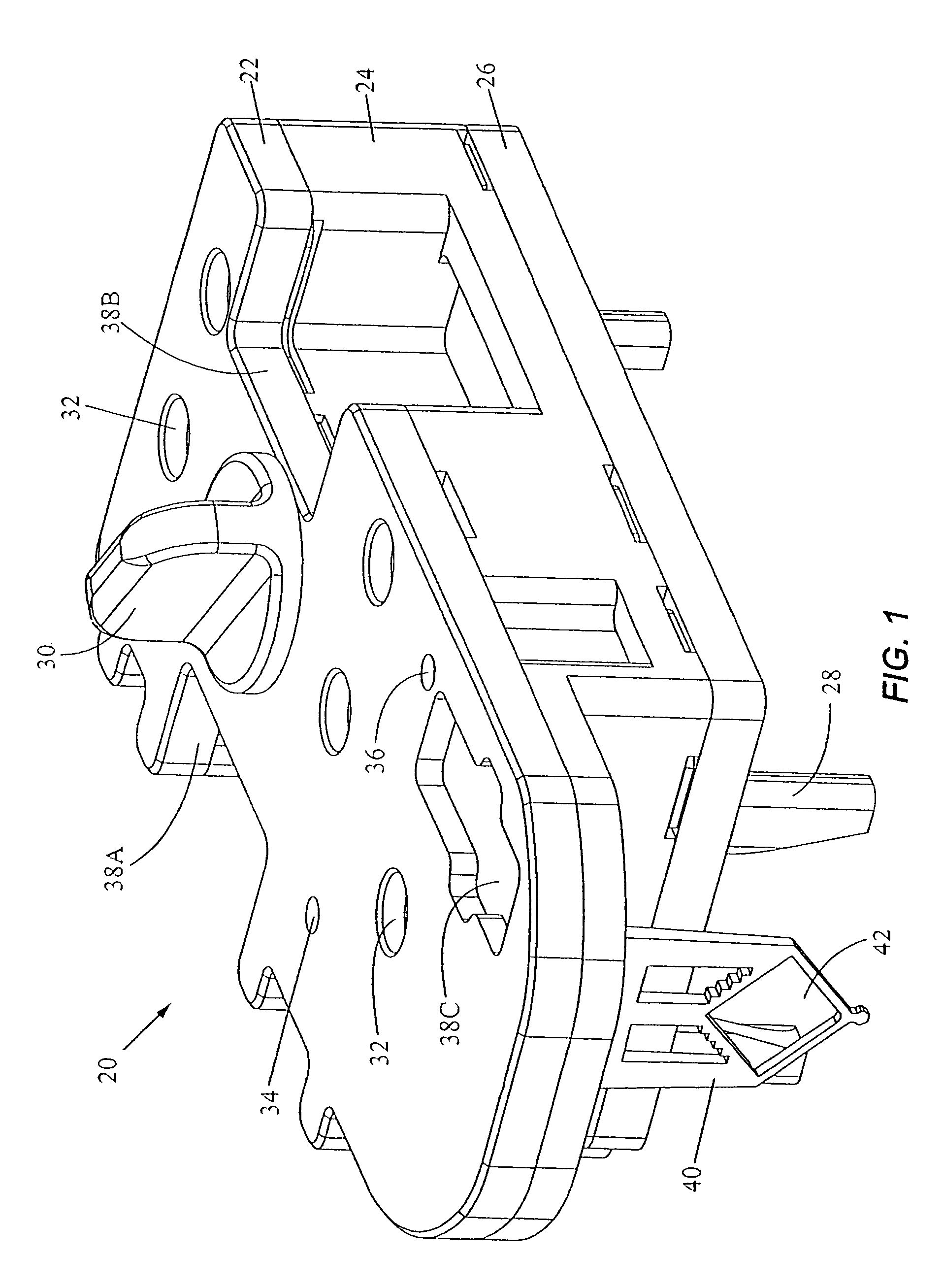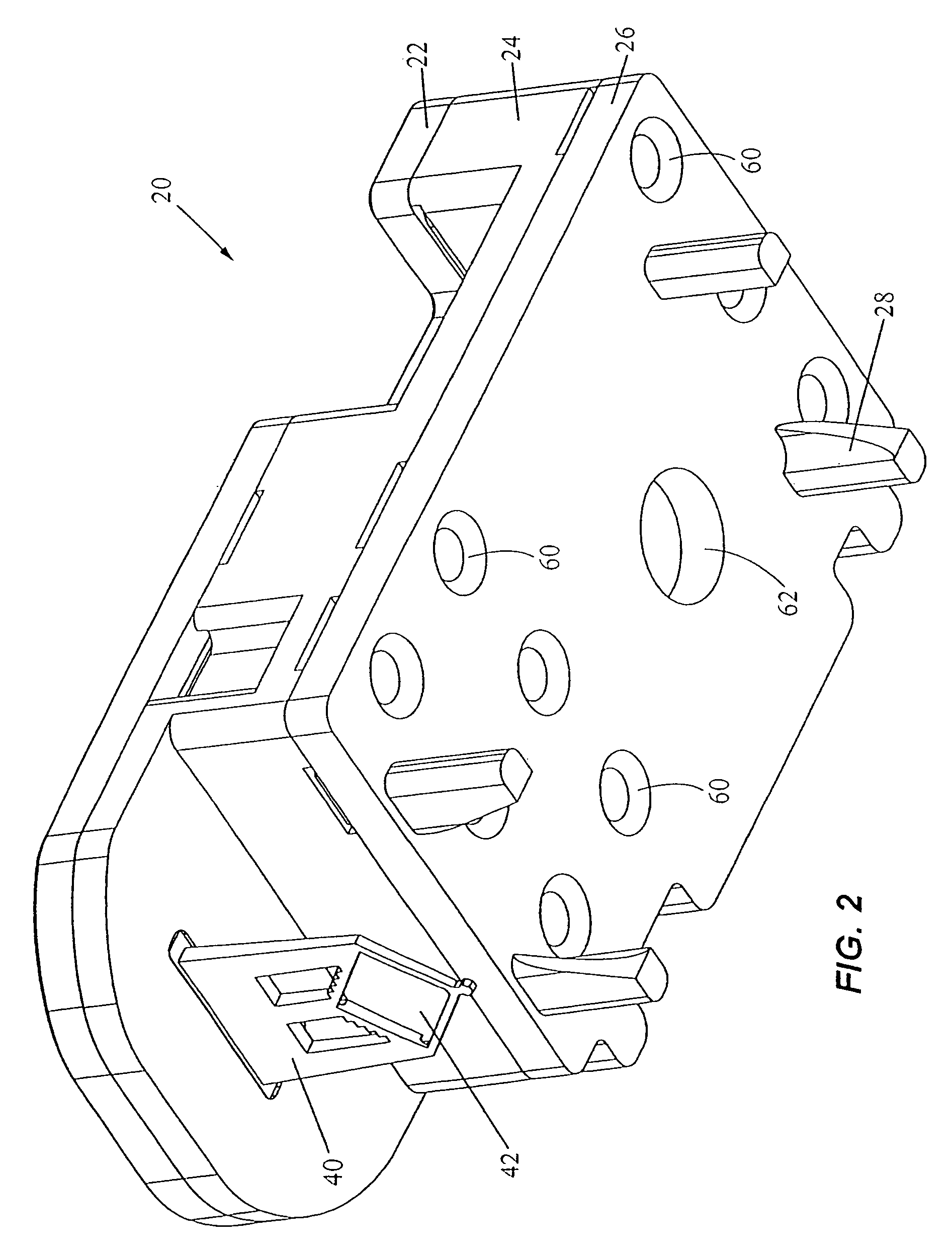Apparatus and method for cell disruption
a cell and virus technology, applied in the field of apparatus and method for rapidly disrupting cells or viruses, can solve the problems of time-consuming purification steps, inability to amplification of subsequent nucleic acids by chemicals, and inability to rapidly disrupt cells, and achieve highly consistent and repeatable cell lysis. , the effect of rapid and effective cell disruption
- Summary
- Abstract
- Description
- Claims
- Application Information
AI Technical Summary
Benefits of technology
Problems solved by technology
Method used
Image
Examples
Embodiment Construction
[0068]The present invention provides an apparatus and method for analyzing a fluid sample. In a first embodiment, the invention provides a cartridge for separating a desired analyte from a fluid sample and for holding the analyte for a chemical reaction. The fluid sample may be a solution or suspension. In a particular use, the sample may be a bodily fluid (e.g., blood, urine, saliva, sputum, seminal fluid, spinal fluid, mucus, or other bodily fluids). Alternatively, the sample may be a solid made soluble or suspended in a liquid or the sample may be an environmental sample such as ground or waste water, soil extracts, pesticide residues, or airborne spores placed in a fluid. Further, the sample may be mixed with one or more chemicals, reagents, diluents, or buffers. The sample may be pretreated, for example, mixed with chemicals, centrifuged, pelleted, etc., or the sample may be in a raw form.
[0069]The desired analyte is typically intracellular material (e.g., nucleic acid, protein...
PUM
 Login to View More
Login to View More Abstract
Description
Claims
Application Information
 Login to View More
Login to View More - R&D
- Intellectual Property
- Life Sciences
- Materials
- Tech Scout
- Unparalleled Data Quality
- Higher Quality Content
- 60% Fewer Hallucinations
Browse by: Latest US Patents, China's latest patents, Technical Efficacy Thesaurus, Application Domain, Technology Topic, Popular Technical Reports.
© 2025 PatSnap. All rights reserved.Legal|Privacy policy|Modern Slavery Act Transparency Statement|Sitemap|About US| Contact US: help@patsnap.com



